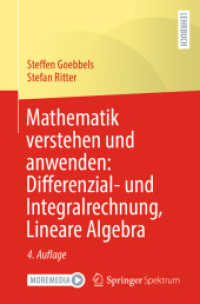Full Description
This book is an investigation of Arabic derivational morphology that focuses on the relationship between verb meaning and linguistic form. Beginning with the ground form, the book offers a comprehensive analysis of the most common verb patterns of Arabic from a lexical semantic perspective. Peter Glanville explains why verbs with seemingly unrelated meanings share the same phonological shape, and analyses sets of words that contain the same consonantal root to arrive at a common abstraction. He uses both contemporary and historical data to explore the semantics of reflexivity, symmetry, causation, and repetition, and argues that the verb patterns of Arabic that express these phenomena have come about as the result of grammaticalization and analogical processes that are common cross-linguistically. The book adopts an approach to morphology in which rule-based derivation has created word patterns and consonantal roots, with the result that in some derivations roots may be extracted from a source word and plugged in to a pattern. It illustrates the semantic relationship between a source word and its derivative, while also offering evidence to support the view of the consonantal root as a morphological object. The volume will be a valuable resource for advanced undergraduate and graduate students of Arabic language and linguistics who are interested in understanding the verb patterns of Arabic, the derivational relationships between words, and the construction of meaning in the mind. It will also appeal to researchers and students in morphology, semantics, historical linguistics, and cognitive linguistics.
Contents
Acknowledgments
List of figures
List of abbreviations
A note on primary references
1: Introduction and overview
2: Words, roots, and patterns
3: Ground form verb patterns
4: Reflexive marking
5: Symmetry
6: Causation and actionalization
7: Repetition
8: The beginnings of a system
Primary references
Bibliography
Index







